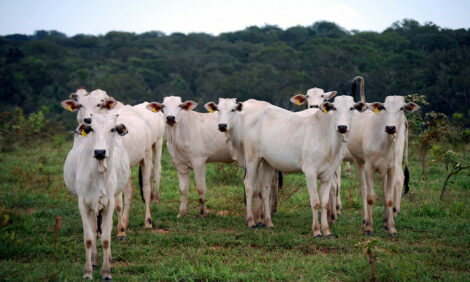



Environmentally Friendly Animal Manure
US - A recent Texas AgriLife Research survey of Texas and California dairies found that cows, like people, are big energy users.That's the bad news. The good news is there's enough potential energy within the manure dairy cows produce to pay their electrical bill and more -- a lot more, according to Dr. Cady Engler, AgriLife Research agricultural engineer.
"Total energy usage ranged from as low as 464 kilowatt hour per year per animal for a pasture dairy in Northeast Texas to as high as 1,637 kilowatt hour for a hybrid facility in Central Texas," Engler said.
"The estimated daily potential energy availability from manure – 25 kilowatt hours per day per cow – is much greater than the average daily on-farm energy requirement of 3.2 kilowatt hours per day per cow," he said.
Engler will be presenting a paper, "Energy Usage Survey of Dairies in the Southwestern United States" at the upcoming Texas Animal Manure Management Issues, scheduled Sept. 29-30 at the Austin Marriott North in Round Rock. More information can be found at the conference's Web site at http://grovesite.com/tamu/tammi
The energy survey included electrical, diesel, gasoline and natural-gas usage related to milking, waste management, feeding and water. The survey did not look at energy expenditures related to the production of feeds.
"That energy usage also does not cover transport of milk to market or processing," Engler said. "Those would add a considerable amount to the total energy required for production and processing of milk."
Several speakers at the manure management conference will talk about the latest research on energy production from manure, said Dr. Saqib Mukhtar, Texas AgriLife Extension Service Service agricultural engineer and conference coordinator.
"The speakers will be talking about different ways of improving the efficiency of the gases that are produced from manure and other biomass, and how we can then efficiently convert those gases into energy including electrical power," Mukhtar said.
Energy production from both anaerobic digestion and gasification will be discussed, he said.
Anaerobic digestion uses naturally occurring bacteria in the absence of oxygen to produce biogas that is primarily composed of methane and carbon dioxide, Mukhtar said. The biogas may be used to generate heat or electricity.
The system has the advantage of not only producing energy but also reducing methane emissions, methane green house gas, he said.
Gasification, the other process discussed, converts manure or other biomass by heating it at high temperatures under oxygen-starved conditions, Mukhtar said. The process produces a mixture primarily of hydrogen and carbon monoxide called "syngas."
Syngas can be processed into other fuels or burned directly to heat a boiler.
"It can also be used in place of natural gas in a gas turbine," he said. Dr. Sergio Capareda, AgriLife Research agricultural engineer, said the two processes could work hand-in-hand. Potentially, sludge leftover from the anaerobic process could be dried and used in a gasification system.
Mukhtar, Engler and Capareda have built mobile gasification and digester systems that can be taken to commercial diaries and other confined-feeding operations. The mobile systems will be used to test the feasibility of the systems under different conditions and as demonstration units for producers.
Both systems have the potential advantage of not only producing electricity, reducing emissions, but of also reducing the amounts of nutrients that must be disposed of on or near the dairy, Capareda said.
"The gasification process reduces the volume of wastes by more than 80 percent, so you are limiting the amount of manure to be disposed of and controlling some of the run-off issues associated with confined-feeding operations," he said.
Registration for the two-day conference is $75 until Aug. 1 and $125 thereafter. There will also be presentations and discussions on other new advances in animal manure management and lessons learned from Hurricane Ike in dealing with animal mortality, Mukhtar said.
TheCattleSite News Desk


